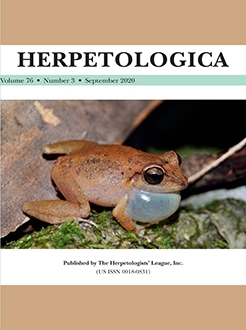The introductions of nonnative species can cause great change in the trophic dynamics of native species. Giant Gartersnakes, endemic predators in the Central Valley of California, are listed as threatened because of the conversion of their once vast wetland habitat to agriculture. Further contributing to this snake's changing ecology is the introduction of many nonnative prey species, resulting in a diet that is almost completely composed of nonnative species. In order to determine whether these snakes actively select their prey or simply consume what is abundant, we examined prey selection by adult Giant Gartersnakes in the context of what prey was available to each individual. Giant Gartersnakes selected a native anuran over nonnative anuran and fish species despite these nonnatives dominating the available species composition. These results contribute to understanding the mechanisms underlying Giant Gartersnake diets in the contemporary landscape and can lead to improved management of prey communities for Giant Gartersnakes and other native predators.
How to translate text using browser tools
9 September 2020
Giant Gartersnakes (Thamnophis gigas) Exploit Abundant Nonnative Prey While Maintaining Their Appetite for Native Anurans
Julia S.M. Ersan,
Brian J. Halstead,
Erica L. Wildy,
Michael L. Casazza,
Glenn D. Wylie
ACCESS THE FULL ARTICLE

Herpetologica
Vol. 76 • No. 3
September 2020
Vol. 76 • No. 3
September 2020
bullfrog
conservation
diet
Fish
Gartersnake
prey selection
Threatened predator




